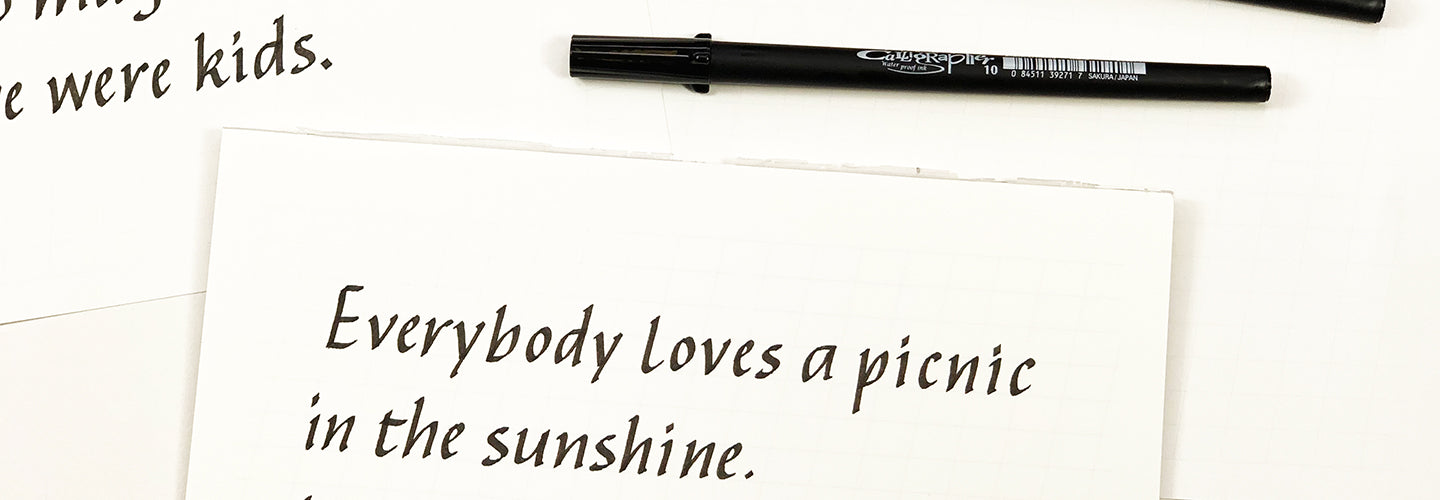
The Finishing Touches
So you’ve finished a piece of work, and you’re pleased (or at least not displeased – we’re rather good at the self criticism, us calligraphers!)
Getting the finishing touches right can elevate a piece of work into something special, so these last stages are really worthwhile.
Rubbing out the lines
Often we will have ruled some lines to guide our lettering or place other elements in the piece. It’s not crucial that they are removed: some calligraphers feel that they are an honest part of the work and leave them, although most people prefer to erase them.
If you are removing the lines, be meticulous – use a really soft eraser and work in good light. Be sure that the ink/paint in the lettering and any decorative elements will not be affected by the eraser, including checking that the paper doesn’t take on an unpleasant shine. (Yes – it’s much better to check these things with a small test piece, using all the materials you plan to use, before ruling up your final piece.)
It’s worth using a magnifier to check for lines you might have missed. Turning the piece so the lines are running away from your eye, and taking a photograph of the work and looking on a computer screen can all help spot those scraps of line you missed.
Placing the credit
This should not really be a finishing touch. Although we usually want the credit (author’s name, source of quote etc.) to be less prominent than the main lettering, the credit should be a part of the design of the overall piece, not an afterthought.
For example, in this piece of work by Werner Schneider, the credit (and translation) are critically designed as part of the whole.
If necessary, the credit can be added to the back of a piece, or for exhibition purposes, displayed on a card alongside.
Where’s the margin?
It’s once a piece is finished or nearly finished that we can make the best decisions about where the “edge” of the piece should be (usually but not always where the mount around the picture will go.)

This is made much harder or even impossible if the piece of work has been squeezed onto a piece of paper that is only just big enough for the lettering, or if a commitment has been made to a particular frame size.
In most circumstances we should be leaving a decent amount of blank paper around our work so that choices can be made about where the margin of the piece ends. A good tool for helping with this is 4 strips of paper which can be laid around the piece to mark the outer edges of the margin of the piece, and moved until an attractive look is obtained.
Mounting and framing
As the creator of your piece you are likely to have some ideas of what the mount and frame might look like, but listen to your framer’s thoughts too – they bring a great deal of experience, and can sometimes come up with something exciting.
(It never hurts to have a second opinion!)
They’ll also be able to advice on the products available: years ago non-reflective glass also meant “non see through” glass and could really diminish the beauty of a piece. Today there is glass that just isn’t visible – a great choice if budget allows.


